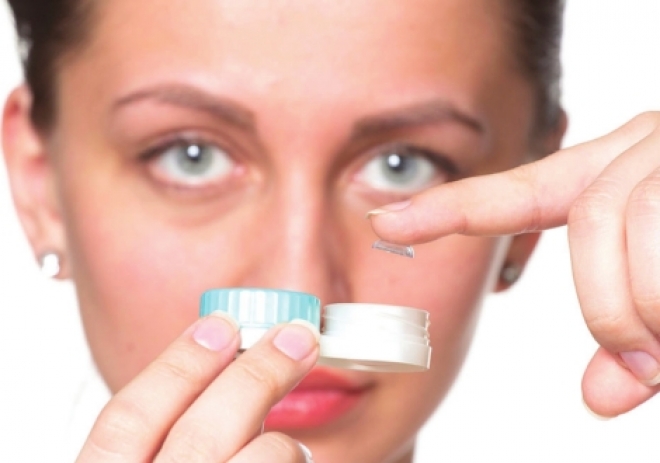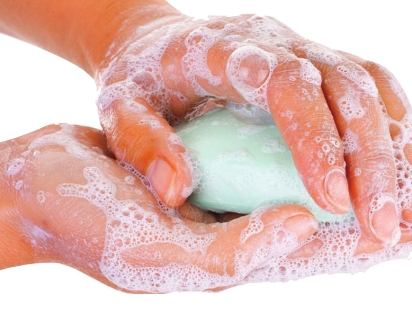CONTACT LENS HEALTH WEEK

Proper care means healthy vision
The week of Aug. 22-26 will mark the Centers for Disease Control and Prevention’s National Contact Lens Health Week.
This dedication is to bring awareness and education on healthy contact lens wear and care. The CDC, which has partnered with a number of other organizations in order to promote awareness, states that the purpose of this week is not only to educate on proper wear and use of contacts, but to warn of the dangers such as eye infections and other complications.
This year will mark the third annual Contact Lens Health Week with three main focuses for its mission, including healthy contact lens hygiene habit, proper use, care and storage of contact lenses and supplies and regular visits to an eye care provider.
While millions of people wear contacts comfortably, the risks involved are often aligned with the proper use and hygiene of the lenses. According to the American Academy of Ophthalmology, the factors that contribute to acquiring an eye infection as a side effect from contact lens use are the use of extendedwear lenses, reduced tear exchange under the lens, environmental factors and poor hygiene. The AAO goes on to state that the No. 1 more effective way in preventing infection is simply by following the guidelines set out by the eye care professional specific to one’s lens use. While this may seem matterof-fact, there are certain steps to caring for the lenses that many may overlook.
The AAO, in partnership with the Contact Lens Association for Ophthalmologists, the Cornea Society and the American Society of Cataract and Refractive Surgery, have created a guideline to the most appropriate and healthy use of contact lenses. It is listed on their website, www.aao.org, as follows:
Before handling contact lenses, wash your hands with soap and water, then rinse and dry them with a lint-free towel.
Minimize contact with water, including removing lenses before going swimming or in a hot tub.
Contact lenses should not be rinsed with or stored in water (tap or sterile water).
Do not put your lenses in your mouth to wet them. Saliva is not a sterile solution.
Do not use saline solution and rewetting drops to disinfect lenses. Neither is an effective or approved disinfectant.
Wear and replace contact lenses according to the schedule prescribed by your eye care professional.
Follow the specific contact lens cleaning and storage guidelines from your eye care professional and the solution manufacturer.
During cleaning, rub your contact lenses with your fingers, then rinse the lenses with solution before soaking them. This "rub and rinse" method is considered by some experts to be a superior method of cleaning, even if the solution you are using is a "no-rub" variety.
Rinse the contact lens case with fresh solution — not water. Then leave the empty case open to air dry.
Keep the contact lens case clean and replace it regularly, at least every three months.
Lens cases can be a source of contamination and infection.
Do not use cracked or damaged lens cases.
In particular, an important step that is oftentimes overlooked is the “rub and rinse,” where the lenses are to be cleaned and rinsed with solution before soaking. The CDC also notes that it is important to know that contact lenses and water do not mix, and in fact can introduce germs into the lenses. According to the CDC, water can change the shape of soft contact lenses and cause them to swell or stick to the eye which can scratch the cornea and increase the risk that germs will enter and cause infection. This important note can mean to be cognizant of showering, swimming or in a hot tub. Additionally, make sure that hands are dry after washing.
The AAO states that daily, singleuse disposable lenses are the safest and healthiest lenses to use in preventing and lowering the risk of infection, but it’s important to consult with a eye care professional to determine which type of lens is best suited for you.
Just as important as the lens themselves, having proper solution care can be just as useful when preventing infection or other conditions. The AAO states that old solution should never be re-used or added to new solution in the lens case. Keep the existing solution in its original packaging, and avoid transferring it to other containers such as travel-size bottles. The AAO explains that transferring the solution can affect the sterility. Make sure the tip of the solution bottle does not interact with any other surface and replace the cap after use.
Finally, the AAO states that “If you store your lenses in the case for an extended period of time, consult the instructions for the lenses or the contact lens solution to determine if re-disinfecting the lenses is appropriate before you wear them. In no case should you wear your lenses after storage for 30 or more days without redisinfecting.”
